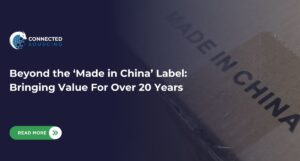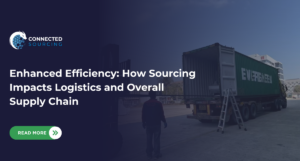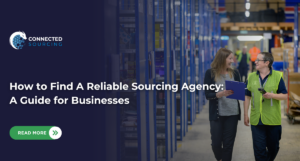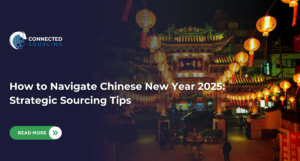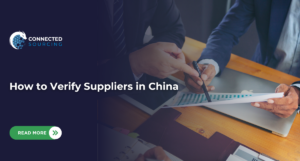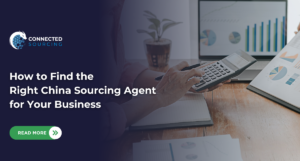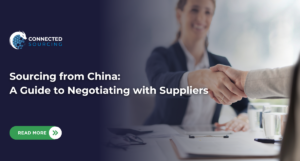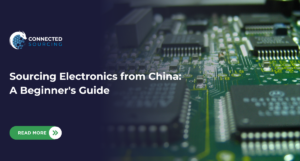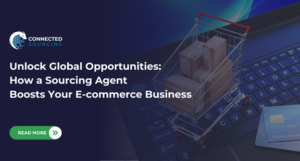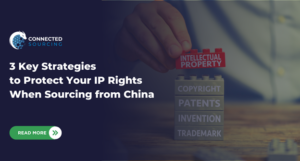
Have you ever tried sourcing products directly from manufacturers and factories? If you have, you’ve likely encountered the terms OEM, ODM, and OBM. These acronyms represent different manufacturing relationships a company can have and it is essential to fully understand them to determine the best strategy for your global sourcing journey.
In our 20+ years of product sourcing experience at Connected Sourcing, we’ve observed that clients often have varied expectations about their collaboration with manufacturers and these terms often lead to confusion for businesses seeking the right manufacturing partner.
In this blog, we will dive deep into these three key models and how to choose the best fit for your needs.
So, what exactly are OEM, ODM, and OBM?
- Original Equipment Manufacturer (OEM): An OEM manufactures products based on the buyer’s specifications, often using the buyer’s brand name and design. Essentially, the buyer designs the product, and the manufacturer produces it. This model is ideal for companies with unique product designs looking for a manufacturing partner to bring their vision to life.
- Original Design Manufacturer (ODM): An ODM develops and manufactures a product based on their own design, but allows the client to customize it with their branding. This allows for faster product development as the ODM already has existing designs that can be customized, which makes it a good option for buyers looking for a quicker turnaround time or a cost-effective solution.
- Original Brand Manufacturer (OBM): An OBM handles the entire process, from product design and development to manufacturing and branding. The manufacturer create products and sell them under their own brand name. This model is perfect for buyers aiming to offer a complete product without getting involved in the manufacturing process.
How Do They Compare?
Here’s a quick breakdown of the pros and cons of each approach:
OEM:
- Pros: Full control over product design, higher flexibility in specifications, stronger brand identity.
- Cons: Requires significant investment in R&D, longer time to market, higher risk if product design fails.
ODM:
- Pros: Faster time to market, lower initial investment, access to existing designs and expertise.
- Cons: Less control over design and IP, potential for the ODM to sell similar products to other brands.
OBM:
- Pros: Lowest upfront investment, requires minimal product development effort.
- Cons: Least control over design and manufacturing process, limited brand differentiation.
IP Rights and Considerations
The type of manufacturing relationship you choose significantly impacts IP ownership.
- With OEMs, the buyer typically retains full ownership of the design, while the OEM owns the manufacturing process.
- ODMs are more complex when it comes to IP rights, as the design originates from the manufacturer. It’s important to have clear contracts regarding modifications and future iterations.
- OBMs offer minimal IP control, as the manufacturer owns the design.
Choosing the Best Option for Your Needs
Determining the right sourcing strategy depends on your business goals, resources, and market strategy:
- Choose OEM if: You have a unique design and want complete control over the product.
- Choose ODM if: You want to leverage existing designs to quickly enter the market with customized products.
- Choose OBM if: You have a limited budget and prioritize a quick product launch.
How Connected Sourcing Can Help
At Connected Sourcing, we specialize in providing comprehensive global sourcing services tailored to your specific needs. Whether you’re looking for an OEM, ODM, or OBM solution, our expertise ensures you find the right manufacturer and make informed decisions. Our dedicated team will guide you through the process, from initial consultation to final product delivery, ensuring seamless and efficient sourcing.
Ready to take your product from concept to reality? Schedule a free consultation with our experts today and let’s unlock your sourcing potential!

Frequently Asked Questions
Do I Need to Speak Mandarin?
Not necessarily! But understanding these tips and potentially partnering with a Mandarin-speaking sourcing agent can make things a lot easier.
What if My Supplier Doesn't Speak English Fluently?
Many global sourcing companies offer translation and interpreter services. Consider working with a sourcing agent who can manage communication for you.
Is WeChat the Only Way to Communicate?
While WeChat is popular, email is still widely used. The best method depends on your supplier's preference. Discuss communication methods during the planning stage to find a solution that works for both of you.
Why Use a Sourcing Company?
Sourcing companies can bridge the language gap, translate documents, handle negotiations, and ensure clear communication throughout the process. This frees you up to focus on other parts of your business, knowing communication is running smoothly.
By following these communication best practices, you can bridge the gap and build strong, successful partnerships with Chinese manufacturers. Remember, clear communication is the foundation of any global sourcing journey.
Connected Sourcing can help you navigate your sourcing process by providing an end-to-end solution, including communication with your suppliers. Contact us today to learn more!

